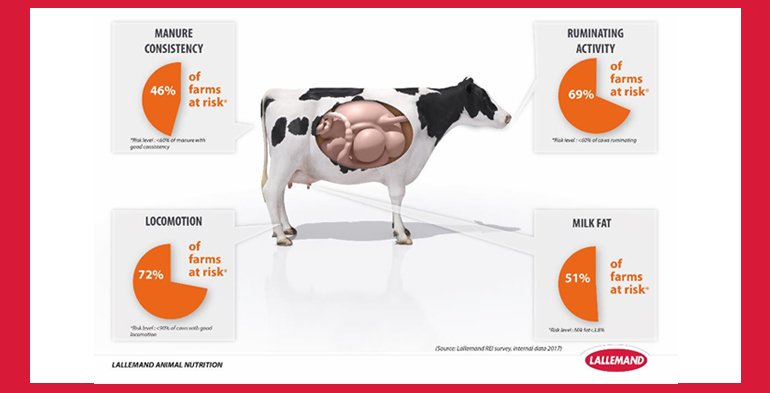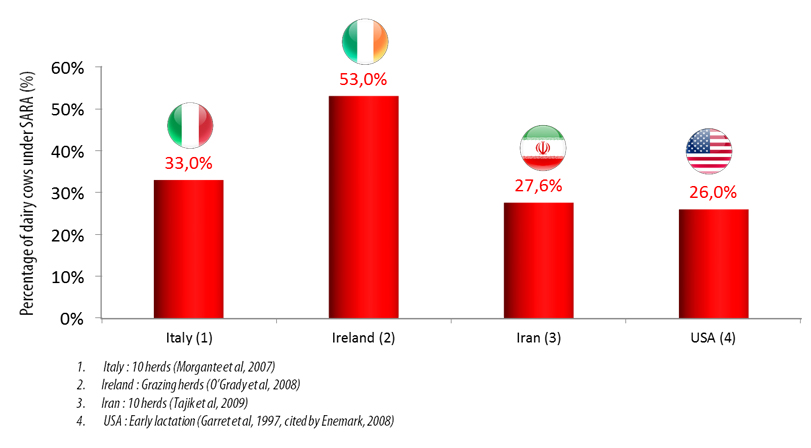
Desk report:Manure consistency assessment reflects digestive function—which is why the assessment is part of the Rumen Efficiency Investigation (REI) audit program designed by Lallemand Animal Nutrition to help assess rumen efficiency and, therefore, feed efficiency on farms. Poor rumen efficiency is often associated with liquid manure due to an increased passage rate, possibly from an imbalanced diet and increased fermentation in the lower gut. Manure screening is also recommended to measure the presence of undigested particles or grains and assess fiber size. The presence of undigested processed grains in the feces is linked to poor rumen efficiency. It also results from an increased passage rate due to an imbalanced diet or low diet digestibility.
Thanks to the REI program, a global rumen efficiency survey was conducted, indicating that manure consistency is sub-optimal in 46% of the farms audited. Altogether the survey indicates that around 50% of dairy farms could have rumen efficiency issues. Consequently, dairy production is affected, and the survey showed that in 51% of farms the milk fat level was also sub-optimal. Such results are consistent with the published literature. Depending on the country, research studies have reported Sub Acute Ruminal Acidosis (SARA) prevalence around 20-30% in most countries, but some countries have a prevalence of more than 50% (Figure).

REI audits can help farmers and nutritionists better understand the link between animal indicators and performance, revealing that rumen efficiency can be an issue on many farms. The rumen-specific live yeast Saccharomyces cerevisiae CNCM I-1077 (LEVUCELL SC) acts as a rumen modifier. It works by improving overall rumen environment and function through the control of rumen pH and animal performance through enhanced fiber degradation. In standard conditions (non-stressful), a meta-analysis of LEVUCELL SC data (14 trials, 1,600 dairy cows) has shown a consistent and significant improvement in feed efficiency (+3% in FCM/DMI)1 . This improvement can increase by 6 to 9% FCM/DMI under stressful conditions. The scientifically demonstrated effect of LEVUCELL SC on fiber degradation can be appraised on-farm thanks to manure screening. For example, in a Danish farm trial, the ratio of particles above 5mm (undigested) represent 5.5% of the manure weight in control cows, compared to only 1.5% when fed S. cerevisiae CNCM I-1077. In another trial conducted in Finland, the percentage of manure with optimal consistency increased by 20%, from 57% to 70%.
To learn more about the REI tool and the global rumen efficiency survey, download our technical paper: About half of dairy farms show suboptimal rumen efficiency.
1 de Ondarza M. B., Sniffen C. J., Dussert L., Chevaux E., Sullivan J.,and Walker N., 2010. Multiple-Study Analysis of the Effect of Live Yeast on Milk Yield, Milk Component Content and Yield, and Feed Efficiency. The Professional Animal Scientist 26:661–666





















